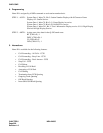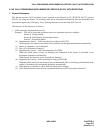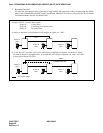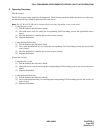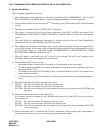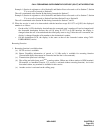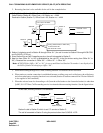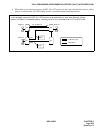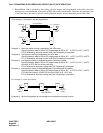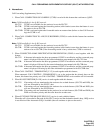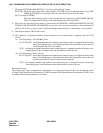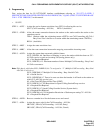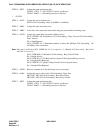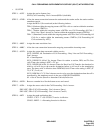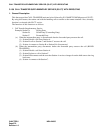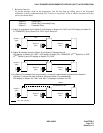
CHAPTER 6 NDA-24305
Page 264
Revision 1.0
CALL FORWARDING SUPPLEMENTARY SERVICE (SS-CF) WITH REROUTING
7. Reestablished route is decided by the routing selection pattern data programmed at the office where the
calling party is accommodated or the gateway PBX office to the called station. Therefore, the improper route
or the route that is the same as before rerouting function may be selected depending on the office data.
For Examples 1) through 4), see the figure below.
For Example 5), see the figure below.
Station B
C.F. to Station C
2000
82
Station A
1000
81
RT1
RT2
RT3
Station C
3000
83
84
Station A
(2000)
81
Station B (3000)
82
Station C
(4000)
83
Example 1) the most proper routing is selected by the office data
Routing selection data to Office “83” programmed at Office “81”: 1
st
RT2, 2
nd
RT1, 3
rd
RT3
RT2 is selected by rerouting function after Call Forwarding is successful.
Example 2) the improper routing is selected by the office data
Routing selection data to Office “83” programmed at Office “81”: 1
st
RT1, 2
nd
RT2, 3
rd
RT3
RT1 is selected by rerouting function after Call Forwarding is successful.
Example 3) the improper routing is selected because of alternate routing
Routing selection data to Office “83” programmed at Office “81”: 1
st
RT2, 2
nd
RT1, 3
rd
RT3
All trunks of RT2 (the first choice) are busy.
RT1 is selected for alternate routing after Call Forwarding is successful.
Example 4) the improper routing is selected because of the difference of protocol
Routing selection data to Office “83” programmed at Office “81”: 1
st
RT2, 2
nd
RT1, 3
rd
RT3
RT2 (the first choice) is ACIS/CCIS line (not Q-SIG or IS-11572 line).
RT1 is selected for alternate routing after Call Forwarding is successful.
Example 5) the rerouting pattern is not changed from that before rerouting function.



